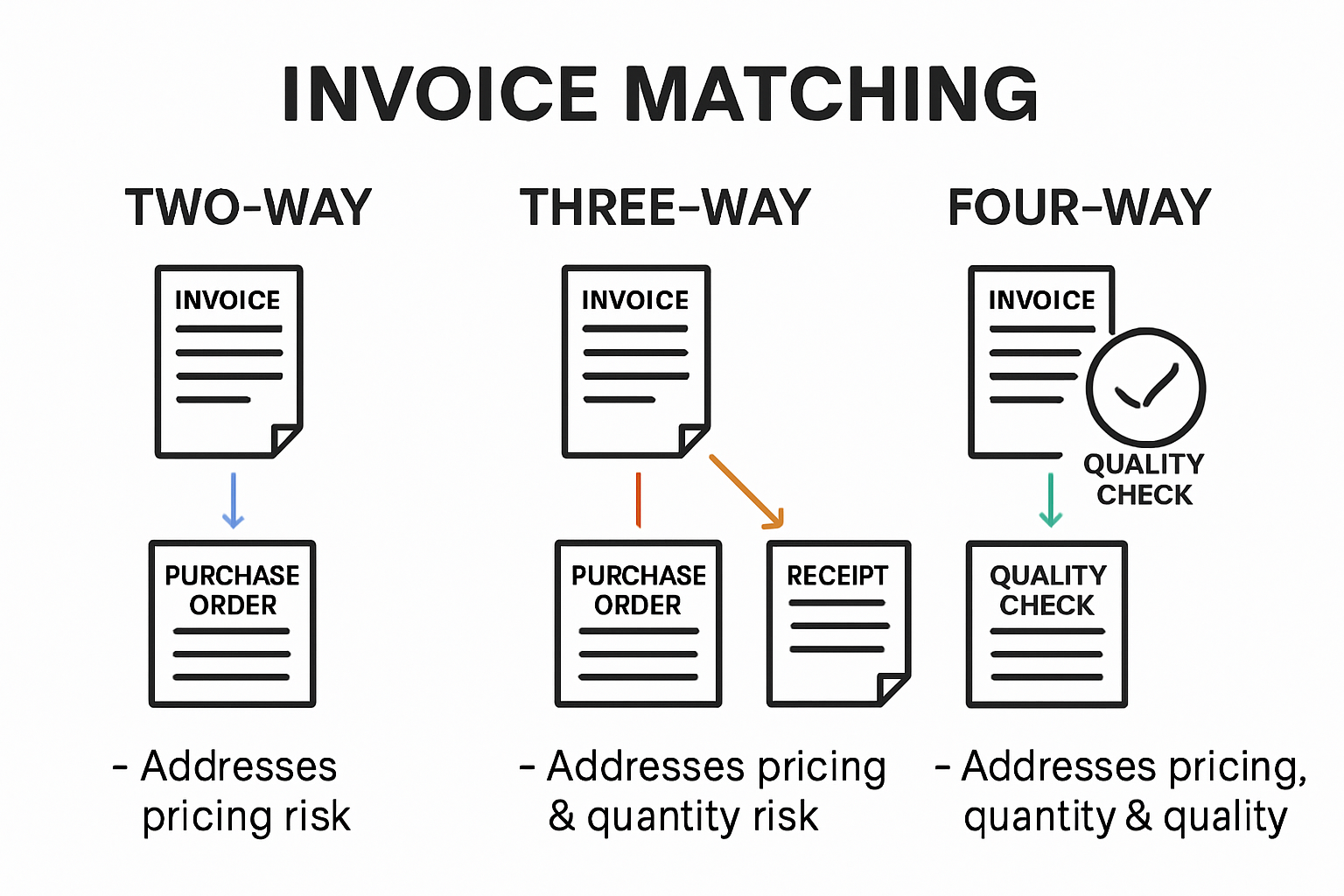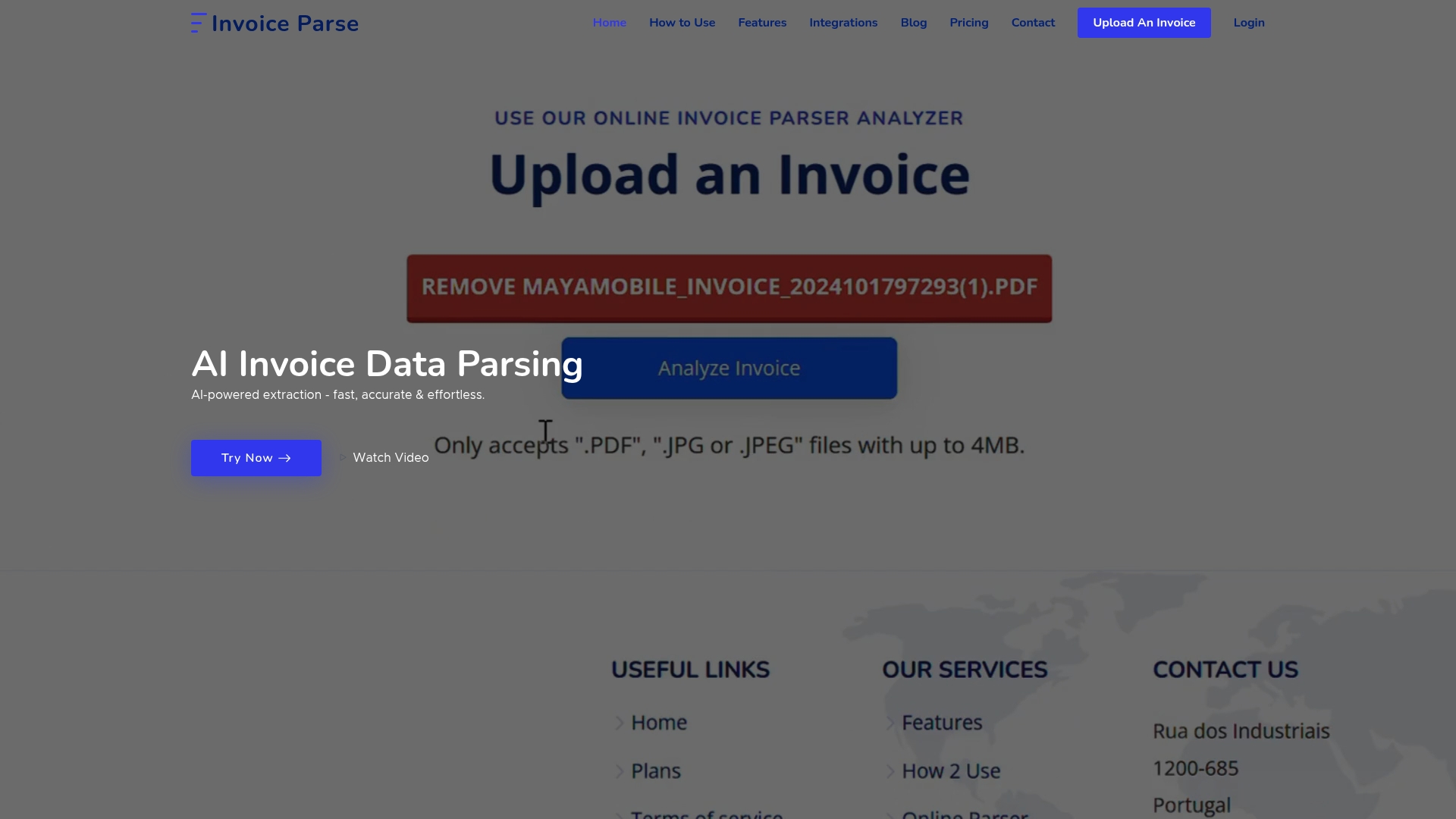Invoice matching sounds like a dry back-office chore, just comparing numbers on forms until they line up. But think again. Up to 10 percent of all business invoices contain errors or discrepancies, leading to millions in unnoticed losses every year. Most people expect fraud to be caught in flashy audits or complicated legal processes, yet the real front line against costly mistakes is this simple matching process you probably never thought about twice.

What Is Invoice Matching? Guide for Accurate Payments
Table of Contents
- Understanding Invoice Matching And Its Role
- Types Of Invoice Matching Methods Explained
- Key Benefits For Business Finance Teams
- Common Challenges And Best Practices
Quick Summary
| Takeaway | Explanation |
|---|---|
| Implement Invoice Matching Methods | Use two, three, or four way matching to ensure accurate invoice verification and prevent financial discrepancies. |
| Mitigate Financial Risks | Invoice matching helps detect fraud and maintain compliance, reducing financial vulnerabilities for organizations. |
| Enhance Operational Efficiency | Automating invoice matching accelerates processing times and minimizes manual errors, freeing resources for strategic tasks. |
| Utilize Technological Solutions | Adopt machine learning and automated systems to improve validation and manage complexities in invoice processing. |
| Establish Best Practices | Develop standardized procedures and communication protocols to ensure consistency and compliance in invoice handling. |
Understanding Invoice Matching and Its Role
Invoice matching is a critical financial process that ensures accuracy and accountability in business transactions. At its core, this systematic approach involves comparing invoice details against purchase orders and receiving documents to verify that all elements align precisely before payment is processed.
The Fundamental Purpose of Invoice Matching
Financial accuracy is not just about numbers. Invoice matching serves as a comprehensive verification mechanism that protects businesses from potential errors and fraudulent activities. Our guide on invoice auditing provides deeper insights into this critical process.
According to Yale University’s financial resources, invoice match exceptions can occur when significant discrepancies emerge between an invoice and its corresponding purchase order. These discrepancies might include variations in quantity, pricing, or specific line item details.
Types of Invoice Matching Approaches
Businesses typically employ three primary invoice matching methods:
To help readers quickly compare and understand the differences between the three primary invoice matching methods, the following table summarizes their main components and verification steps.
| Matching Method | Documents Compared | Key Verification Step |
|---|---|---|
| Two Way Matching | Invoice vs. Purchase Order | Ensures the invoice matches the original order |
| Three Way Matching | Invoice vs. Purchase Order vs. Receiving Documentation | Confirms goods/services were received as ordered |
| Four Way Matching | Invoice vs. Purchase Order vs. Receiving Doc. + Quality Check | Adds quality/condition assessment of received items |
- Two Way Matching: Compares the invoice against the original purchase order
- Three Way Matching: Validates the invoice against both the purchase order and the receiving documentation
- Four Way Matching: Includes an additional step of confirming the goods or services were actually received and meet quality standards
The Vermont State Finance Department defines matching as “the process of applying system match control rules against a voucher and purchase order to ensure that an invoice being entered reflects what was ordered before it is approved for payment.”
By implementing robust invoice matching protocols, organizations can significantly reduce financial risks, prevent overpayments, detect potential fraud, and maintain precise accounting records. This systematic approach transforms invoice processing from a mundane administrative task into a strategic financial control mechanism that protects the organization’s fiscal integrity.
Ultimately, invoice matching is not just about reconciling numbers. It represents a comprehensive approach to financial management that ensures transparency, accuracy, and accountability in every business transaction.
Types of Invoice Matching Methods Explained
Invoice matching represents a critical financial control mechanism with multiple approaches designed to verify and validate transaction details. Organizations implement different matching methods based on their specific operational requirements, risk management strategies, and complexity of procurement processes.
Two Way Matching: The Basic Verification Process
Two way matching represents the most fundamental invoice matching method. In this approach, businesses compare the invoice directly against the original purchase order to confirm critical details such as pricing, quantities, and line item descriptions. Explore our detailed guide on invoice workflows to understand how this process integrates into broader financial systems.
According to the Georgia Institute of Technology’s vendor invoice policy, two way matching focuses on verifying that invoiced items precisely match what was originally ordered. This method involves a systematic review where financial teams cross-reference invoice amounts, unit prices, and item descriptions to ensure accuracy before processing payment.
Three Way Matching: Enhanced Verification
Three way matching introduces an additional layer of validation by incorporating receiving documentation into the verification process. Beyond comparing the invoice with the purchase order, this method also confirms that goods or services were actually received and match the original order specifications.
The U.S. Department of the Treasury’s G-Invoicing Program Guide emphasizes the importance of standardized data communication in three way matching. This approach helps organizations:
- Confirm Actual Receipt: Validate that ordered items were physically received
- Prevent Unauthorized Payments: Ensure only legitimate transactions are processed
- Maintain Accurate Financial Records: Create a comprehensive audit trail
Four Way Matching: Comprehensive Validation
Four way matching represents the most rigorous invoice validation method. In addition to the steps involved in three way matching, this approach includes a quality assessment of received goods or services. Advanced machine learning research suggests that sophisticated matching techniques can enhance accuracy and reduce potential discrepancies.
This comprehensive method goes beyond traditional verification by:
- Comparing invoice details with purchase order
- Confirming receipt of goods or services
- Evaluating the quality and condition of received items
- Ensuring compliance with contractual specifications
Organizations with complex supply chains or high-value transactions often prefer four way matching to mitigate financial risks and maintain stringent quality control. By implementing these progressive matching methods, businesses can transform invoice processing from a routine administrative task into a strategic financial management approach.

Key Benefits for Business Finance Teams
Invoice matching provides substantial strategic advantages for business finance teams, transforming traditional financial processes into sophisticated risk management and optimization strategies. By implementing comprehensive invoice matching protocols, organizations can unlock significant operational and financial benefits that extend far beyond simple transaction verification.
Financial Risk Mitigation and Cost Control
Finance teams leverage invoice matching as a critical mechanism for reducing financial vulnerabilities. Learn more about invoice automation benefits to understand how technology enhances these processes. According to accounting insights research, supplier invoices play a crucial role in financial audits and compliance, helping businesses track expenses and manage cash flow effectively.
Key risk mitigation strategies enabled by invoice matching include:
- Fraud Detection: Identifying unauthorized or duplicate payments
- Expense Accuracy: Ensuring precise financial recording
- Contractual Compliance: Verifying alignment with agreed terms
Enhanced Operational Efficiency
Invoice matching methodically transforms complex financial workflows by eliminating manual reconciliation processes. Finance teams can redirect valuable human resources from repetitive administrative tasks to strategic financial analysis and planning. By automating matching procedures, organizations significantly reduce processing times and minimize human error potential.
The efficiency gains manifest through:
- Faster invoice processing cycles
- Reduced manual data entry requirements
- Improved accuracy in financial reporting
- Streamlined approval workflows

Strategic Financial Decision Making
Beyond operational benefits, invoice matching generates comprehensive financial insights that enable more informed strategic decision making. By maintaining meticulous transaction records and analyzing spending patterns, finance teams can:
- Negotiate better vendor contracts
- Identify potential cost-saving opportunities
- Track spending trends across departments
- Improve overall financial forecasting accuracy
Advanced invoice matching techniques provide granular visibility into organizational spending, transforming financial data from static records into dynamic strategic assets. Finance professionals can leverage these insights to drive proactive financial management, optimize resource allocation, and support broader organizational financial goals.
Ultimately, invoice matching represents more than a transactional verification process. It serves as a sophisticated financial control mechanism that empowers businesses to maintain fiscal integrity, minimize risks, and make data-driven strategic decisions with confidence.
Common Challenges and Best Practices
Invoice matching presents numerous complex challenges for organizations, requiring sophisticated strategies and technological interventions to ensure accurate financial processing. Understanding these challenges and implementing robust best practices becomes crucial for maintaining financial integrity and operational efficiency.
Data Inconsistency and Matching Complexities
One of the most significant hurdles in invoice matching involves managing data inconsistencies across different documents. Explore advanced invoice processing strategies to address these intricate challenges. According to advanced machine learning research, clean and consistent data represents the foundational requirement for accurate information extraction.
Common data inconsistency challenges include:
The table below outlines common data inconsistency challenges encountered during invoice matching, assisting readers in recognizing specific issues that may require attention and technological solutions.
| Type of Data Inconsistency | Description |
|---|---|
| Vendor Name Variations | Different spellings of vendor names |
| Unit Price Formatting Differences | Unit prices appear in inconsistent formats |
| Description Terminology Issues | Product/service descriptions use varied terms |
| Date/Numeric Discrepancies | Differences in how dates and numbers are presented |
- Variations in vendor name spellings
- Differences in unit price formatting
- Inconsistent product or service description terminology
- Discrepancies in date and numerical representations
Technological Solutions and Validation Strategies
Modern organizations are increasingly adopting advanced technological approaches to overcome invoice matching challenges. Research on deep learning invoice validation demonstrates innovative methods for processing complex documents, including partially handwritten or mobile-captured invoices.
Key technological strategies involve:
- Machine Learning Algorithms: Implementing intelligent matching techniques
- Natural Language Processing: Standardizing description interpretations
- Automated Validation Systems: Reducing manual intervention
- Pattern Recognition Technologies: Identifying potential discrepancies
Proactive Risk Management and Compliance
Effective invoice matching goes beyond technological solutions. Research on procure-to-pay processes highlights the importance of developing comprehensive strategies that address both technological and procedural challenges.
Best practices for mitigating risks include:
- Establishing clear vendor communication protocols
- Creating standardized internal documentation processes
- Implementing multi-level verification mechanisms
- Developing continuous training programs for finance teams
- Maintaining detailed audit trails for each transaction
Organizations must recognize that invoice matching is not a static process but a dynamic ecosystem requiring constant adaptation. By combining technological innovation, rigorous procedural standards, and continuous learning, businesses can transform potential challenges into opportunities for financial optimization and strategic insight.
Ultimately, successful invoice matching demands a holistic approach that balances technological capabilities with human expertise, ensuring accuracy, compliance, and strategic financial management.
Frequently Asked Questions
What is invoice matching?
Invoice matching is a financial process that compares invoice details against purchase orders and receiving documents to verify accuracy and prevent errors before processing payments.
What are the different types of invoice matching methods?
The primary types of invoice matching methods are two way matching, three way matching, and four way matching, each differing in the number of documents compared and validation steps involved.
How can invoice matching help mitigate financial risks?
Invoice matching helps detect unauthorized payments, ensures accuracy in expense reporting, and verifies compliance with contracts, thus reducing financial vulnerabilities for organizations.
What role does technology play in invoice matching?
Technology, including machine learning and automated validation systems, plays a crucial role in improving the efficiency, accuracy, and consistency of the invoice matching process, helping organizations handle complex data more effectively.
Ready to Eliminate Invoice Errors and Manual Hassles?
If inaccurate invoice matching or hours of tedious data entry drain your team’s energy and expose your business to costly mistakes, you are not alone. As highlighted in this article, up to 10 percent of invoices hide problems like mismatched amounts, missing details, or unreadable vendor names. Manual validation leaves room for error and slows everything down, especially when dealing with the complexities of two way, three way, or four way matching.

Put control back in your hands instantly. Invoice Parse gives you the power to turn any invoice document into structured, error-free data in seconds. There is no need to build templates or sort through piles of paperwork. Simply upload a PDF or image and receive all the details you need—including vendor name, line items, and totals—accurately parsed and ready for your approval workflows. Explore our product features and streamline your invoice validation now. Stop letting costly errors slip by. Try Invoice Parse today and experience confident, accurate payments from the very first upload.
Recommended
- AI Invoice Parse – Invoice Audit Checklist: Key Steps for Accurate Reviews
- AI Invoice Parse – The Ultimate Guide to Invoice Line for Beginners (2025)
- AI Invoice Parse – Amount of Invoice Guide: Understanding Invoice Amounts 2025
- AI Invoice Parse – Invoice Approval Workflow: Steps, Best Practices, and Tools
